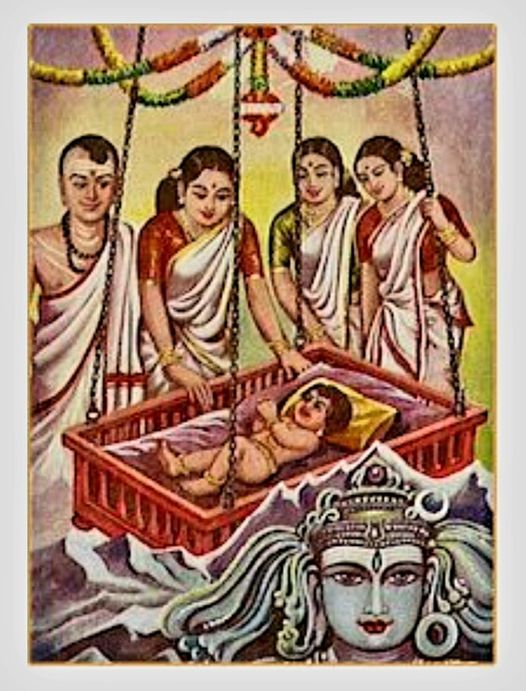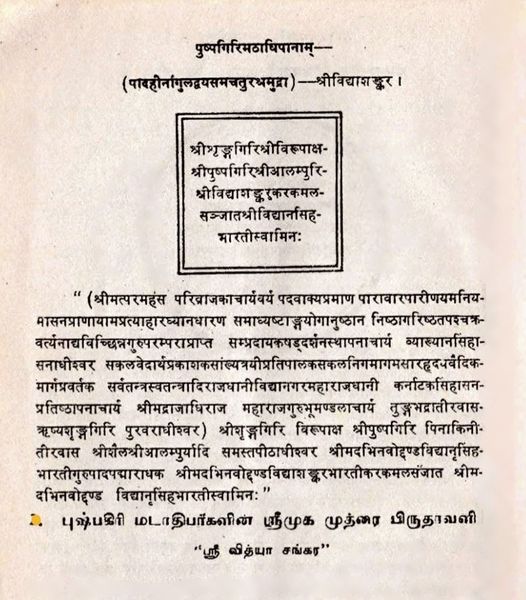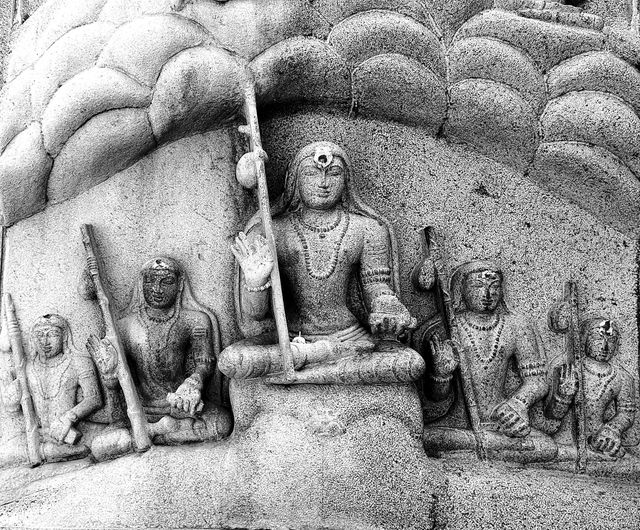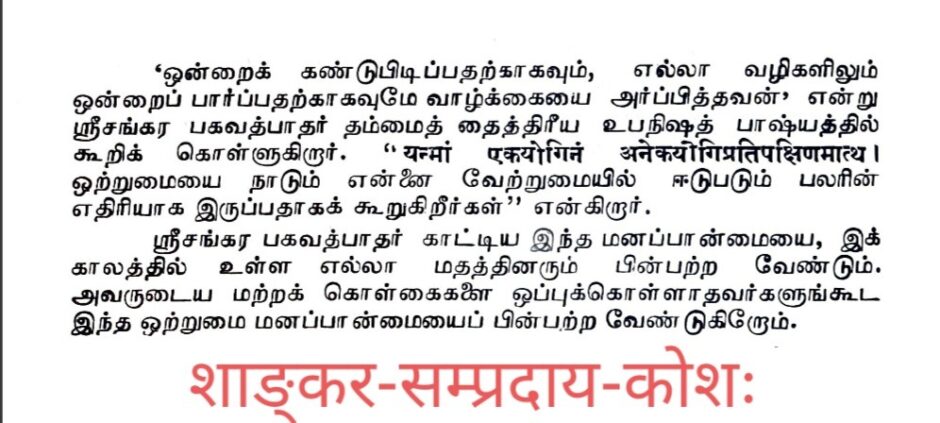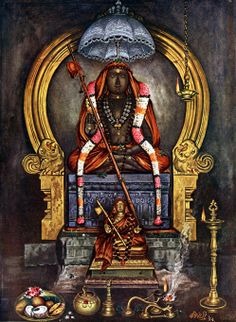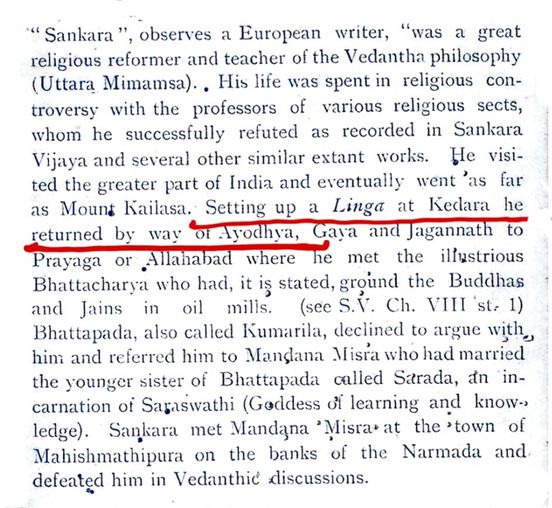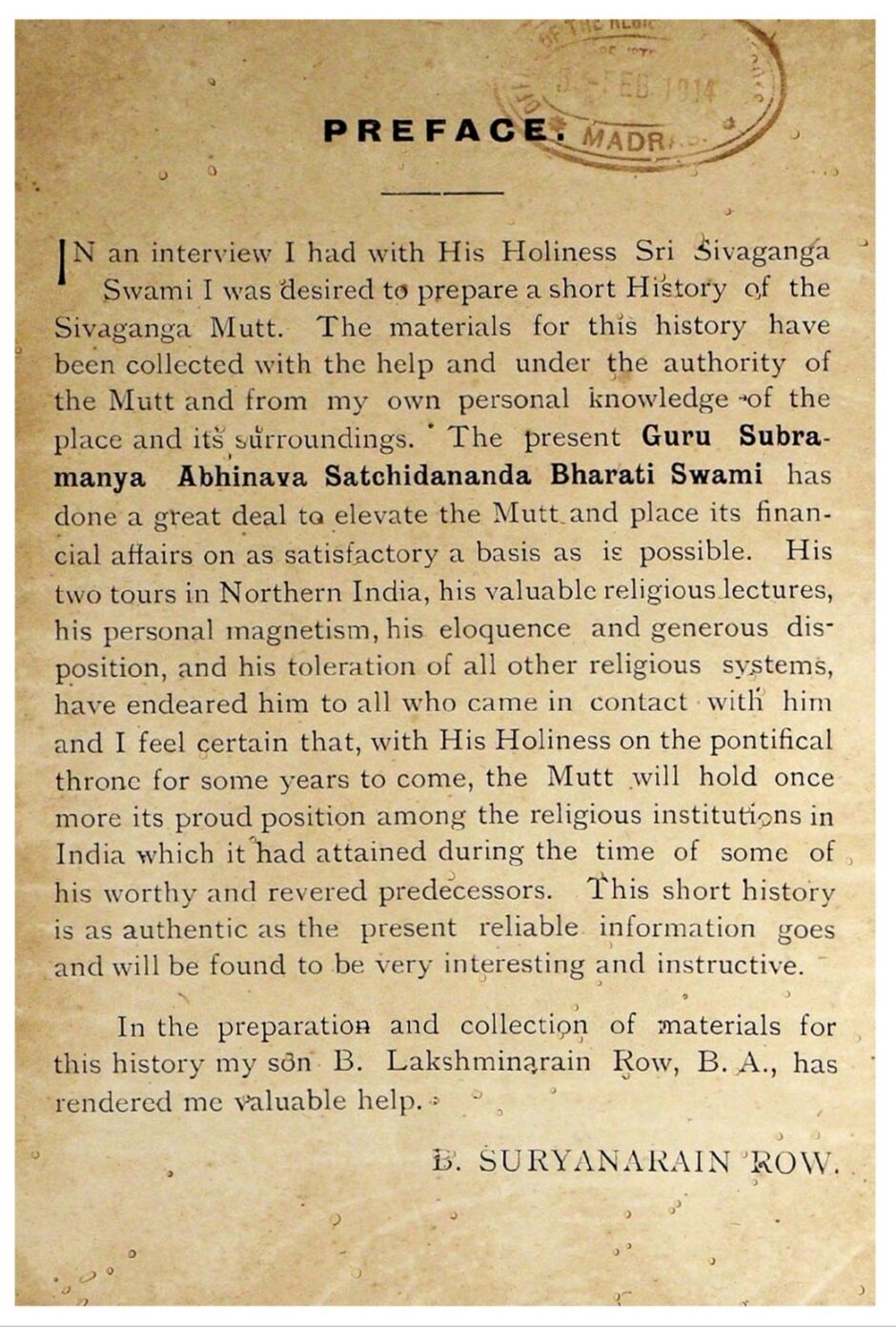ஸ்ரீசங்கர விஜயம்
பேராசிரியர்
ஆர்.விச்வனாதய்யர், எம்.ஏ., எல்.டி.,
(ஸ்ரீசங்கரஜயந்தி வெளியீடு)
ஆதி சங்கரர் அடிபணிந் தேநான்
அறிவிற் சிறந்தோர் நிரம்பிய அவையில்
சச்சிதா னந்த ஸ்வரூபமே யான
சங்கரர் சரிதையை, அவர்தம் மகிமையை
அகவற் பாவில் அடியேன் நும்பால்
அறிவிற் சிறியேன் உரைக்கமுன் வந்தேன்;
அன்னப் புள்ளுக்கு அளிக்கும் பாலில்
தண்ணீர் கலந்து தாலத்தி லிட்டால்
உவந்து வந்தப் பாலைப் பருகிக்
கலந்து வைத்த நீரைத் தவிர்த்தலின்
குற்றம் குறைகள் நீவிர் காணில்
சற்றக் குறைகளை அறவே மறந்து
குணமதை மனத்தில் கொண்டுமே என்னை
மனமுவந் தேற்க வேண்டினேன் நும்மை.
நூல்
அவதாரம்
பாரோங்கு புகழ்கொள் பாரத நாட்டில் சீரோங்கும் கேரள தேசப் பகுதியில்
புண்ணியம் மிக்க காலடிப் பதியில்
அண்ணல் சிவகுரு அவர்தம் மனைவி
ஆர்யாம் பிகையெனும் அருங்குண மாது
பூரியர் இவர்செய் அரும்பெரும் தவத்தால்
முக்கண் முதல்வனே சங்கரர் என்று திக்கெலாம் வணங்கத் தோன்றி யருளப்
பெற்றோர் மகிழ்ந்தனர் ; பேரின்ப மெய்தினர் ;
உற்றார் உறவினர் உள்ளங் களித்தனர்;
பரம்பொருள் அம்சமே உருக்கொண்ட சங்கரர்
நிரம்பிய தேசுடன் விளங்கினா ராங்கே.(1/20)

